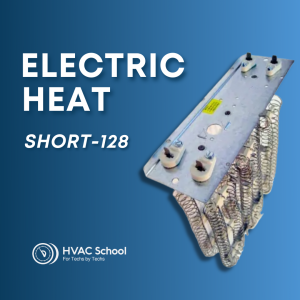Electric Heat – Short 128

In today’s short podcast, Bryan discusses electric heat, how we use it in our work, and what it does.
Also called heat strips or heat elements, electric heat is a supplemental heat source that we usually see on heat pumps. We generally see them in fan coils within a cartridge or a kit at the top of an air handler. However, not all systems have backup heat.
We want to avoid running electric heat as much as possible because it is inefficient. There is almost nothing we can do to make heat strips more efficient; they will usually yield around 3.41 BTUs per watt.
We usually only run heat elements when a heating system can’t keep up with the heat loss. However, the electric heat often runs more often than it should, which can cause inefficient conditions. You can avoid inefficient conditions by programming the thermostat properly.
If you reduce the voltage on the heat strips, the less heat they will produce. Current ratings also differ between 208v or 240v applications. When you have more voltage, you’ll have more current as well.
In some municipalities, you may have to use a thermostat that keeps heat strips OFF unless the temperature is below a certain value, often 40 degrees. Your electric heat should also be the last resort for a system.
Heat strips also help with heating when a heat pump is in defrost. The defrost board backfeeds the electric heat. These heat strips are also often designed with an interlock that forces the blower on whenever the electric heat is on (but not the other way around).
Bryan also discusses:
- Kilowatts and electrical ratings
- Wiring and relays
- Wire sizing
- Furnace-to-heat-pump conversions
- Possible hazards
If you have an iPhone, subscribe to the podcast HERE, and if you have an Android phone, subscribe HERE.
Check out our handy calculators HERE.
Check out information on the 2022 HVACR Training Symposium at https://hvacrschool.com/symposium/.
Author:









Comments
To leave a comment, you need to log in.
Log In